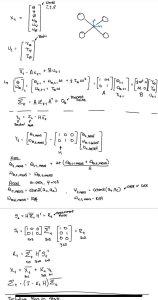Gaurav did Part A, Ankit did Part B, Bhavik did Part C
The most significant risks that could jeopardize the success of the project are scheduling issues. Trying to make the first demo is definitely a time crunch, and we have lots of work left to do. The way we are managing the risks is by keeping each other accountable to make sure we stay on track. Our contingency plan for the demo is to just show the object detection working and the drone flying, and have those two subsystems be put together for the next demo.
There have not been any existing changes to the design of the system. Although we have lots of work to do, we should still be able to meet the deadlines we have set for ourselves to make the first demo.
Part A:
The search and rescue drone addresses critical global needs such as usage in disaster search and rescue scenarios. For the target audience, search and rescue teams, time is of the essence and we are able to greatly minimize the time spent searching for the target by introducing our drone into the search process. By using object detection technology and integrating the processing power of the Kria all on the drone, we are able to get rapid autonomous detection of stranded individuals and maximize the area covered in given period of time.
With respect to how our solution caters towards those who do not necessarily have a technical background, our solution will start searching as soon as the drone is turned on. It will run its start sequence, rise into the air, and start the lawnmower search. This makes our product extremely useful for non-specialized teams or SAR teams in remote regions who do not have access to highly specialized equipment or a technically proficient staff. In this way, it scales to meet the global demand for effective, autonomous emergency response systems and greatly improves disaster preparedness around the world.
Part B:
From a cultural perspective, it is the goal of governments (both federal and local) to provide safety for their residents. For coastal communities, this involves providing search and rescue for any people lost at sea or on another body of water. However, a common theme across search and rescue, especially over bodies of water, is that it is an expensive proposition. By creating this low-cost SAR drone, we are hoping to enable communities, regardless of income level, to provide safety for their residents.
The other cultural aspect of our project is that we want to maintain privacy, and so all computations related to the person detection are done onboard the drone. This means no camera footage is saved or offloaded which allows us to maintain the privacy of any people being detected at sea or any rescue crews that might show up at a later period of time.
Part C:
The autonomous SAR drone aims to help find missing people in an ocean environment, and as such, it is important we minimize the disturbance caused to the marine life and ecosystem during operations. We have designed the drone such that it doeesn’t have to interact with the ocean environment at all. Given that all the necessary components are onboard, the drone simply has to fly above the ocean environment without having to physically land or make contact with the water. This allows us to avoid interference with aquatic animals and the ocean ecosystem.
Furthermore, in order to reduce disturbances, we have designed the drone to have a small mechanical footprint made from carbon fiber. This will ensure that the drone is very light and can more efficiently make use of the battery power on board. Additonally, we have selected efficient yet quite drone motors such that noise pollution is reduced, thus helping avoid disrupting aquatic life. In regards to powering the drone, we have elected to use a recharable battery, this allows us to reduce wastage and reuse the tools hardware for multiple flights.







